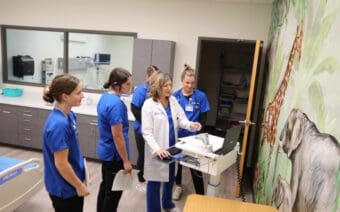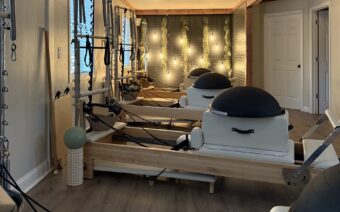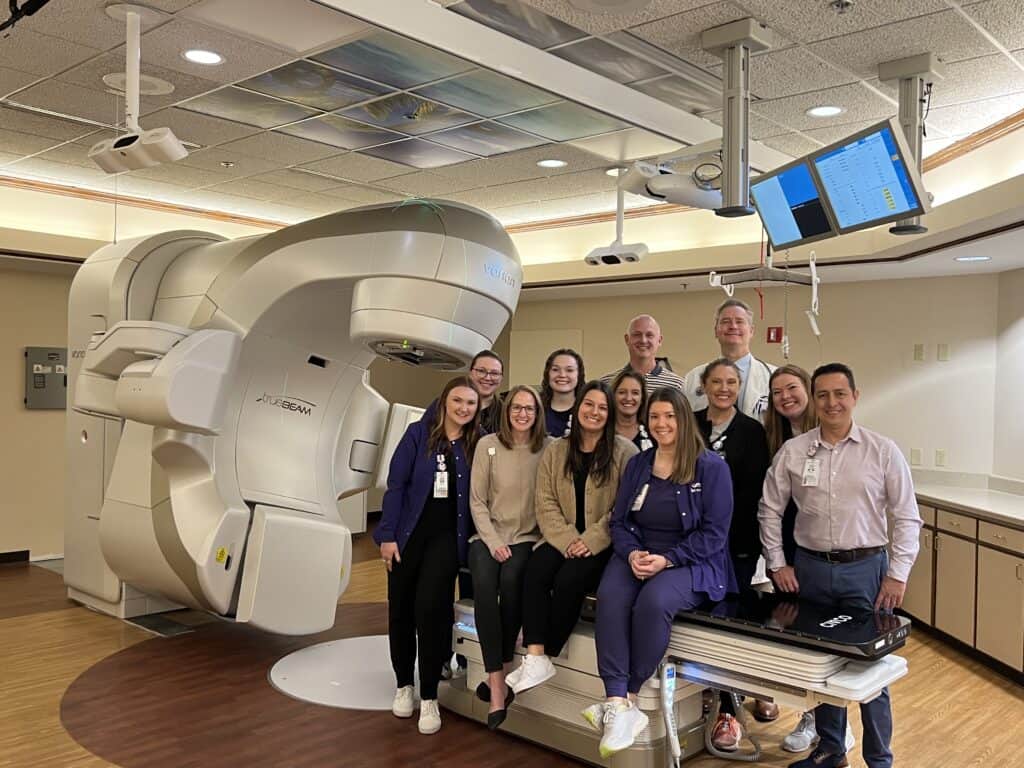
August 25, 2025
FOND DU LAC – The radiation team at SSM Health St. Agnes Hospital in Fond du Lac is excited to end an aspect of radiation therapy that has caused a lot of post-treatment heartache for patients.
Michael Vander Kooy – an SSM Health Cancer Care board-certified radiation oncologist – said since the hospital started using Align RT Surface Guided Radiation Therapy, the team has learned that one of the technology’s most beneficial aspects is that it “almost always eliminates the need for tattoos or marks for treatment alignment purposes.”
Previously, Vander Kooy said a person undergoing radiation was required to have a series of small tattoo markers injected into their skin to help the radiation technician know where to scan. These marks, he said, are often permanent.
Vander Kooy said this led the SSM Health team to the Align RT transition.
“Typically, we would come at all these different angles where we had to mark a tattoo on the front side, lateral tattoos on the right lateral side, as well as another lateral side to help with alignment,” he said. “And study after study has shown that many patients hold negative views on radiation therapy tattoos and see them as painful, life-long reminders of their cancer treatment.”
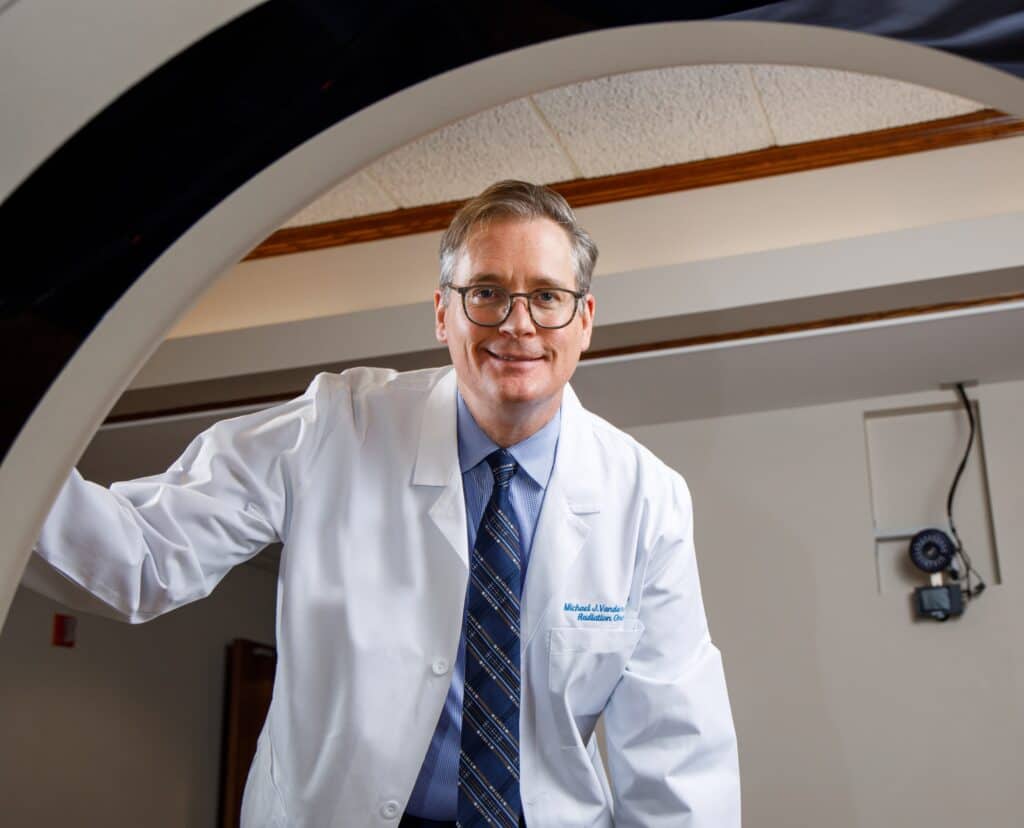
As the team became accustomed to using the treatment, Vander Kooy said they started realizing Align RT quickly and accurately pinpoints the treatment area – enough so that the use of tattoos was no longer necessary.
“We’re pleased to start offering this advancement here in Fond du Lac,” he said. “Our patients no longer need the tattoos that remind them of their treatments long after the cancer journey concludes.”
‘Submillimeter accuracy’
Vander Kooy said this relatively new technology is also revolutionary in and of itself.
Align RT, he said, employs three 3D infrared cameras to track the patient’s positioning in real time and creates a 3D map of the surface, which guides the radiation therapy, determining the optimum time to administer the treatment “with submillimeter accuracy.”
Vander Kooy said radiation treatments are exponentially more precise with this therapy as it guides patient positioning using 10,000 pixels of data gathered from special software and the 3D cameras, versus the previous process of aligning the patient using only tattoo markers.
“And this is very important, because patients must remain perfectly in position as we deliver the radiation,” he said. “We use what is called the Varian TrueBeam linear accelerator, which measures in millimeters to protect surrounding healthy tissues.”
Vander Kooy said not only does Align RT allow doctors to set up a treatment parameter more precisely for each session, but it also tracks the patient’s movement in real time.
“[It] notifies the radiation therapy tech if any patient movement is occurring, and if there is, the machine will automatically shut off,” he said. “We will then reposition the patients if necessary. This is crucial for improving safety, quality assurance, patient comfort and precision.”
Expedite treatments
Vander Kooy said those goals served as the founding mission of Vision RT, which developed the technology.
Per the company’s website (visionrt.com), it started in London, England, in 2001 and now has offices worldwide, with more than 3,000 sites using Align RT.
The Align RT Surface Guided Radiation Therapy session, Vander Kooy said, is, on average, 21% faster than traditional delivery methods like those requiring patient tattoos.
The ability to expedite treatments, he said, is a major benefit for patients who struggle with holding their position while holding their breath, which is important to avoiding healthy tissue damage.
“One of the great advances with Align RT is related to the deep inspiratory breath hold for left-sided breast cancer patients,” he said. “With that breath hold, we’re able to push the heart away from the breast during treatments.”
Vander Kooy said long-term data shows an increased avoidance of cardiac damage when delivering radiation therapy in these cases.
“If the patient were to cough or breathe, and the left breast would collapse and go near the heart again, the machine would automatically stop delivering radiation because of the parameters we had set using this technology,” he said.
Come a long way
All of the radiation therapists at SSM Health St. Agnes Hospital are trained in Align RT, Vander Kooy said – witnessing firsthand how it improves the patient experience and treatment delivery, he notes.
He said it’s a remarkable improvement compared to how radiation treatment was conducted when he first arrived at SSM Health St. Agnes Hospital in Fond du Lac in 1998.
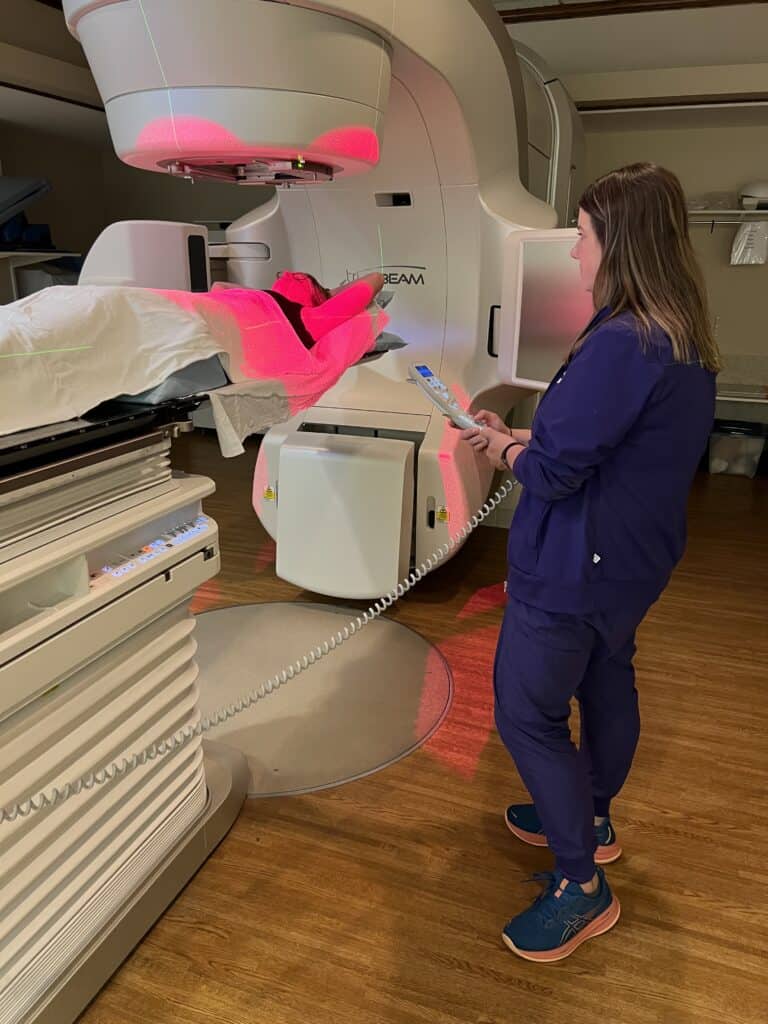
“The progress over the years has been amazing, going from just basic radiation to 3D treatment planning, to Intensity Modulated Radiation Therapy to Stereotactic Body Radiation Therapy and now to using Surface Guided Radiation Therapy,” he said. “It’s another step in trying to maximize safety for the patient with every treatment, while minimizing exposure to the surrounding area.”
Vander Kooy said the advancement of technology has made the profession stronger.
“It’s much more enjoyable practicing radiation oncology now, because we have many more precise tools where the radiation is so much more targeted,” he said. “Every day, we’re killing off thousands and thousands of cancer cells with better success at minimizing toxicity.”
Vander Kooy said the hospital’s radiation department serves roughly 400 patients a year, and Align RT is used on more than 95% of the hospital’s cancer patients, due to its ability to improve patient outcomes.
“We want to give every patient the best chance of a cure and the least chance of side effects,” he said.
 Destination Door County featured in Destination Forward
Destination Door County featured in Destination Forward Packerland Veterinary Center makes its mark with orthopedic services
Packerland Veterinary Center makes its mark with orthopedic services


